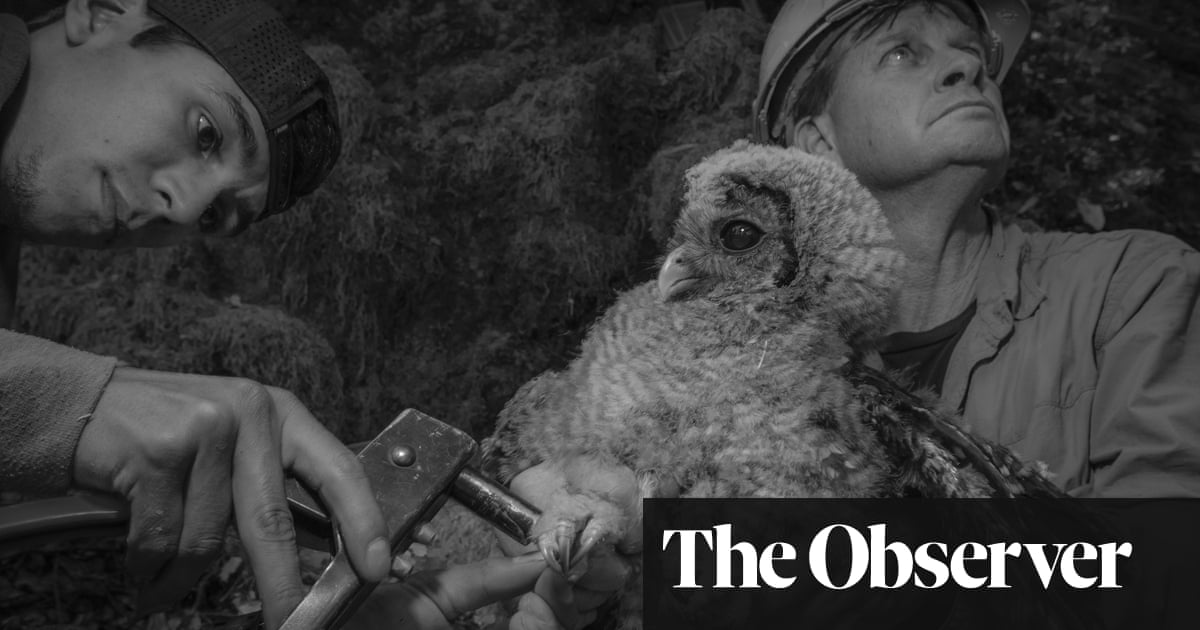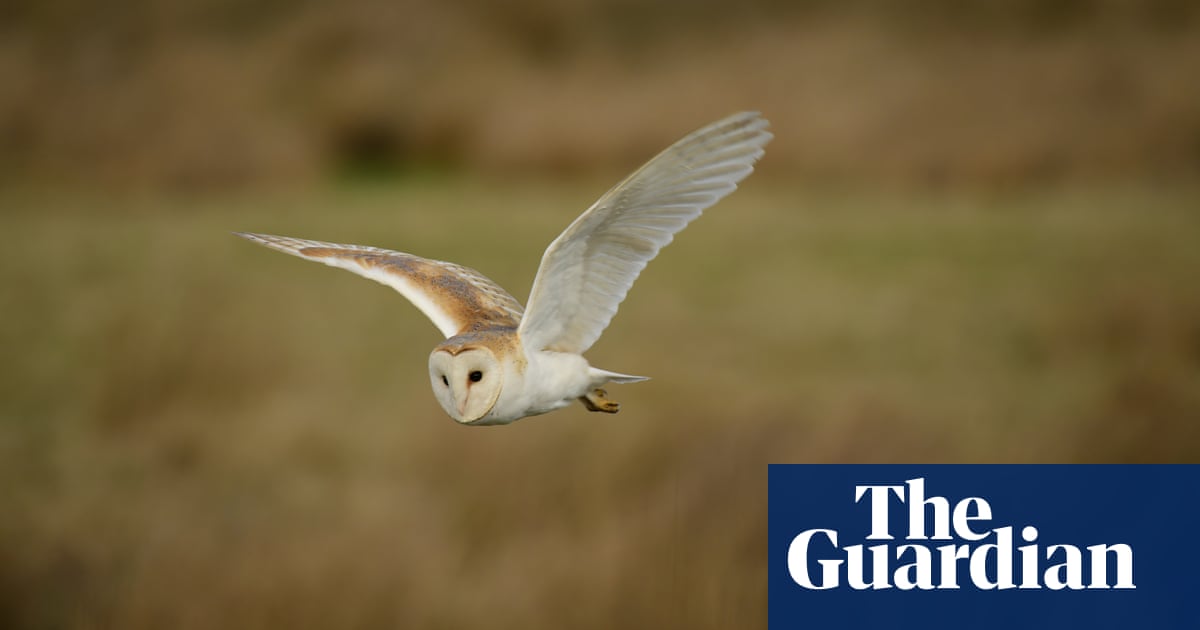
One of the world’s most distinctive avian hunters, the northern spotted owl, is fitted with an ID ring by conservationists in this stark, black-and-white image taken by US photographer Morgan Heim. The photograph is one of six from a portfolio by Heim which will be unveiled this week at the Wildlife Photographer of the Year exhibition at the Natural History Museum in London.
Heim’s dramatic photographs – which have been highly commended in the competition’s photojournalism story award – reveal the desperate attempts that are now being made by conservationists to try to save the threatened northern spotted owl. These efforts include shooting rival owl species in a bid to protect the bird from a series of devastating ecological blows that have afflicted it in recent years.
“My photographs deliberately pose a question for which there is no easy answer: when is it acceptable to kill one wild species in an attempt to save another,” Heim told the Observer.
The woes of the northern spotted owl began with widespread logging last century in Oregon and California which has since wiped out swathes of old-growth forest, the bird’s natural habitat. Today, a mere 15% of the original habitat of the northern spotted owl remains, with the result that there has been a devastating drop in numbers of the species.
Worse was to follow, however. In areas where northern spotted owls managed to cling on, a new threat arrived in the form of barred owls, which have been spreading across the United States over the past few decades and which have proved to be a more adaptable, successful species.
“Barred owls are very confident and aggressive,” said Heim “They eat all sorts of food and are bigger than northern spotted owls. They are a bit of a bully really. On the other hand, they are also beautiful birds and it is not their fault that they are so successful.”
Wherever conservationists looked they saw that the northern spotted owl was doing badly – with one exception. In places where there were no barred owls, there was a halt in the decline of northern spotted owls. They have managed to hold out there, albeit in restricted numbers.
Armed with this data, it was decided to cull barred owls and a total of six hunters have since been licensed to trap and kill them. They include Mark Higley, who is seen here with assistant Anthony Colegrove as they ring a northern spotted owl as part of their species monitoring programme.
In addition to this work, the pair use recorded calls to lure barred owls before shooting them, hunting that has to be carried out in almost complete darkness. As a result, Heim was forced to use infra-red cameras to record their work. “This element of the story is not about the killing,” adds Heim. “It’s about the person who has to do it.”
The efforts of Higley and Colegrove and the other barred owl hunters had been moderately successful, said Heim. “To date, it is the only thing that’s giving the owls the kind of breathing room that they need to be able to stabilise and to hang on,” she added.
But barred owls are not going to disappear. They have proved to be remarkably adaptive, which indicates that in regions where northern spotted owls are holding out, there will be a constant need for barred owls to be hunted and culled. That raises the question: to what extent is killing one native owl to save another be seen as a long-term solution to a key conservation crisis?
Nor are barred owls the only threat to the northern spotted to have emerged in recent years. Marijuana growing – carried out by international drug cartels – has spread across the Pacific north-west along with the unregulated and unmonitored use of anticoagulants and other rodent poisons put down by farmers to protect their crops.
Owls eat rodents, and many predators that share the owls’ eating habitats have already been poisoned and died. In addition, studies have found that 70% of the northern spotted owls that have been studied have been found to be carrying traces of these chemicals.
“This story represents how challenging conservation can be and how difficult it is to accurately document complicated issues,” said Kathy Moran, chair of the competition jury. “From the photographer’s nuanced use of infra-red to the respectful way in which they handled the death of the barred owls, we felt that narrative, moment and a critical conservation topic were powerfully expressed.”












